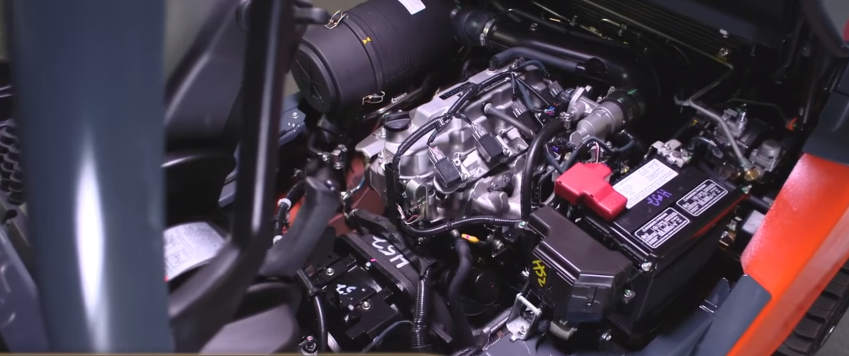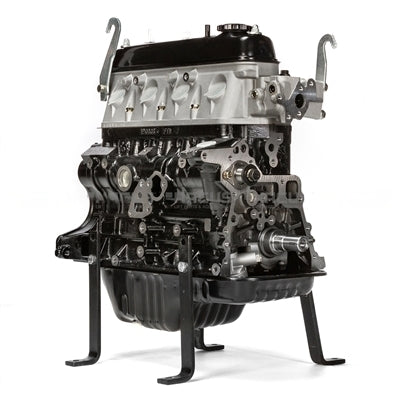Why the Engine Is the Finest Selection for Performance and Efficiency in Your Car
The engine continues to be a critical part in vehicle style, largely because of its significant influence on both performance and efficiency. As advancements in technology allow smaller sized engines to provide impressive power while enhancing gas economy, the combination of features such as turbocharging and hybrid systems becomes progressively essential. These developments not just boost driving experience but likewise address ecological issues. The inquiry arises: exactly how do these components integrate to redefine our understanding of automotive performance? Discovering this equilibrium reveals deeper insights into the future of engine layout.
Comprehending Engine Kind
Comprehending the different kinds of engines is vital for maximizing efficiency and performance in auto layout. The key engine types include inner burning engines (ICE), electrical engines, and hybrid systems, each offering unique advantages and limitations.
Internal burning engines, which can be more classified into gasoline and diesel variants, depend on the burning of gas to generate power. Gas engines usually offer higher RPMs and better acceleration, while diesel engines are known for their torque and gas performance, making them excellent for sturdy applications.
Electric engines, on the other hand, use electric motors powered by batteries or gas cells. They provide instantaneous torque delivery, causing smooth acceleration and reduced exhausts. The efficiency of electric engines is considerably more than that of ICEs, making them a preferred choice for eco-conscious customers.
Crossbreed systems combine both inner combustion and electrical engines, leveraging the staminas of both innovations. They optimize gas consumption by utilizing electrical power at lower rates and changing to fuel or diesel for higher speeds or larger loads.
Selecting the right engine kind is important for attaining preferred efficiency metrics and ecological sustainability in modern vehicle engineering.
The Effect of Engine Dimension
Engine dimension frequently plays a critical function in establishing an automobile's efficiency and performance. Typically measured in liters or cubic centimeters, engine dimension directly influences the power outcome and torque features of a vehicle.
However, increased engine size often associates with diminished gas effectiveness. Smaller engines can supply appropriate performance for daily driving while promoting better performance, making them a preferred option in mid-size and portable automobiles.
Furthermore, advancements in engine layout, such as turbocharging and direct gas shot, enable smaller sized engines to accomplish power levels equivalent to their larger equivalents. This pattern emphasizes the relevance of not exclusively concentrating on engine dimension however additionally thinking about overall lorry style and technology (4y engine). Ultimately, the effect of engine size on efficiency and efficiency highlights the need for customers to assess their certain driving preferences and demands when selecting a lorry
Advanced Engine Technologies
Advancements in engine technologies have dramatically reshaped the landscape of auto performance and effectiveness, structure upon the fundamental concepts established by engine size. Significantly, innovations such as turbocharging and direct fuel shot have actually enabled smaller engines to provide power degrees formerly related to bigger equivalents. Turbochargers compress air entering the engine, enabling raised power output without a corresponding increase in engine size, while direct injection optimizes fuel shipment, improving burning performance.
In addition, variable shutoff timing systems have actually arised as a crucial technology, allowing engines to adjust valve operation based on driving problems. This flexibility boosts both efficiency throughout velocity and gas effectiveness during cruising. Hybrid and electric engine innovations better highlight the change in vehicle style, combining conventional internal burning engines with electrical motors to take full advantage of effectiveness while minimizing discharges.
Additionally, developments in materials scientific research have actually caused lighter, much more durable engine parts, additionally improving efficiency and longevity. The assimilation of innovative electronics and engine control units additionally allows for real-time modifications, guaranteeing optimum efficiency across different conditions. Jointly, these sophisticated engine technologies not just improve automobile see this site performance however likewise contribute to an extra sustainable vehicle future, demonstrating the recurring advancement of engine design.
Balancing Power and Performance
Striking an equilibrium check here in between power and effectiveness is important in modern auto design as suppliers seek to fulfill progressively rigorous discharges policies while satisfying consumer need for performance (4y engine). The difficulty hinges on optimizing engine features to deliver durable power result without sacrificing fuel economy
To accomplish this equilibrium, engineers utilize numerous strategies, such as turbocharging, which improves engine power forcibly in more air, enabling a smaller engine displacement that enhances gas efficiency. Variable valve timing innovations additionally play a significant function, making it possible for engines to readjust their performance features based on driving conditions, therefore boosting both power and efficiency.
Additionally, improvements in products and making techniques have resulted in lighter engine parts, which decrease general automobile weight and boost gas performance without endangering power. Crossbreed technologies have also emerged as a viable option, integrating standard inner burning engines with electrical powertrains to supply an increase in efficiency while preserving lower discharges.

Future Trends in Engine Layout

Furthermore, the growth of sophisticated products, such as lightweight compounds and high-strength alloys, is readied to reinvent engine components. These products not just reduce weight yet likewise boost thermal effectiveness, therefore optimizing efficiency. Additionally, producers are discovering variable compression proportions, enabling engines to adjust to different driving problems, enhancing both power output and fuel economy.
Further, the increase of fabricated knowledge and artificial intelligence in engine style is allowing predictive maintenance and real-time performance optimization. This modern technology can lead to engines that self-adjust for optimal efficiency based upon driving patterns.

Final Thought
To conclude, the engine serves as a vital part in accomplishing optimum efficiency and performance in contemporary automobiles. Advanced modern technologies, such as turbocharging and crossbreed systems, boost power outcome while lessening fuel consumption and exhausts. The interaction between engine size and layout remains to progress, driving technologies that balance exhilarating performance with ecological sustainability. As automotive engineering advances, the concentrate on creating reliable, effective engines will stay vital in forming the future of transport.
Additionally, advancements in engine style, such as turbocharging and straight gas injection, allow smaller sized engines to attain power levels comparable to their bigger equivalents.Developments in engine technologies have significantly improved the landscape of vehicle performance and performance, building upon the foundational principles established by engine dimension. Turbochargers compress air entering the engine, permitting for enhanced power output without an equivalent increase in engine dimension, while straight shot optimizes gas shipment, boosting combustion performance.
Crossbreed and electrical engine innovations further highlight the shift in auto design, incorporating conventional inner burning engines with electric motors to take full advantage of efficiency while minimizing emissions.
Jointly, these innovative engine innovations not just improve automobile performance however additionally contribute to a much more lasting automobile future, demonstrating the continuous advancement of engine design. (4y engine)